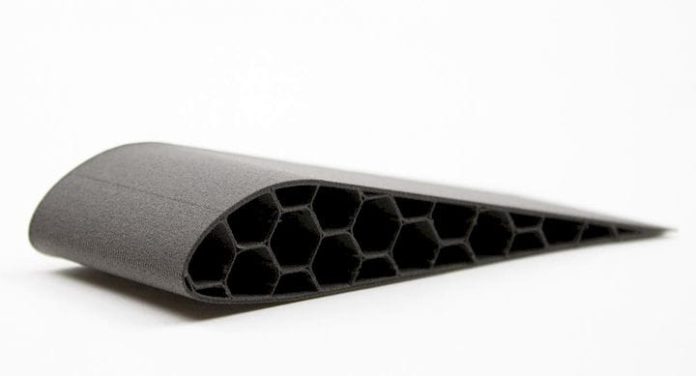Large-scale 3D printer manufacturer Colossus and materials producer colorFabb enter a partnership to bring Lightweight (LW) materials to the FGF market.
As a reminder, FGF which stands for Fused Granular Fabrication consists in processing plastics in the form of granules rather than the conventional expensive filament method. This technology is developed by companies like Weber Additive which has also acquired a 30% share in Colossus.
By combining colorFabb’s expertise in high-performance polymers and 3D printing filaments and Colossus’s process knowledge in large-scale extrusion the foaming materials and formulations, the two companies have been able to obtain a stable FGF compound.
In this line of lightweight (LW) foaming materials, there is a LW PLA, a material which uses active foaming technology to achieve lightweight, low-density parts, or exceptionally high layer heights depending on the parameters used. colorFabb’s LW PLA filament is a highly specialized material and an iconic filament used in various industries from model airplanes and drones to cosplay costumes and attributes.
“The first time we saw the LW material range from colorFabb we immediately recognized the opportunities it would bring to the FGF market.” Philippe-Daniel Merillet, CEO of Colossus, explains; “Imagine, taking the principle of printing twice as fast or twice as light applied to large-scale industrial print systems. Printing and alternating these effects with the same pellets, the same machine and even incorporated in the same Gcode. It’s revolutionary. In Print services around the world, cost is a function of material price + printing time. Higher layer heights allow for reduced print times. Its like having a a 4.5K/h extruder capable of 9k/h and the ability to print only percentages of the normal weight, what’s not to love. It will change the way people print from this moment onwards.”
The LW materials expand based on the energy they absorb. “The amount of energy the filament can absorb during printing depends on the length of the hot-zone and the time it takes for the filament to pass through the hot-zone. The longer a filament will reside inside the hot-end, the more energy it can absorb which will increase the amount of expansion. Assuming nozzle size and layer height are fixed, the main input variables are temperature, speed, and flow to determine the amount of expansion.”
Furthermore, according to Ruud Rouleaux, CEO of colorFabb, due to FGF extruders’ multiple heating zones, the material can absorb higher amounts of energy and reach full expansion easily. Playing with all variables known to FGF printers such as a large range of nozzle sizes and layer heights, multiple temperature zones, pressure settings in both extruder and melt pump as well as various melt pump flow rates, can achieve results that are unique and revolutionary.
The first rounds of testing have been completed with very promising results. Philippe-Daniel mentioned that layer heights of 1cm have already been achieved on an 8mm nozzle but claims the limits of this material have not yet been reached.
The material will be commercialized through Colossus and is therefore expected to be launched in combination with the highly anticipated new XS model FGF Printer the company will very soon release. The XS Printer is the first print system developed in partnership with high quality WEBER additive extrusion technology. The printer has been specially designed and optimized to get the most out of this innovative material.
Remember, you can post job opportunities in the AM Industry on 3D ADEPT Media free of charge or look for a job via our job board. Make sure to follow us on our social networks and subscribe to our weekly newsletter : Facebook, Twitter, LinkedIn & Instagram ! If you want to be featured in the next issue of our digital magazine or if you hear a story that needs to be heard, make sure you send it to contact@3dadept.com






